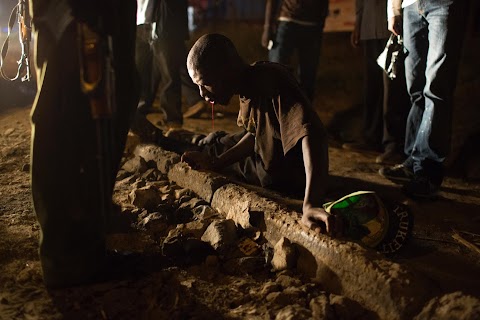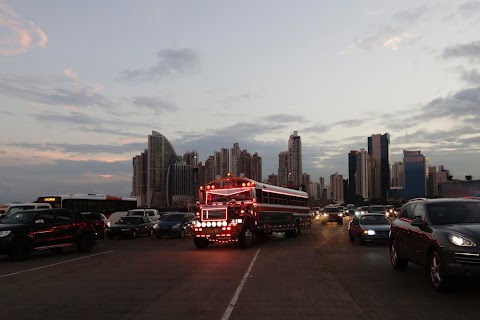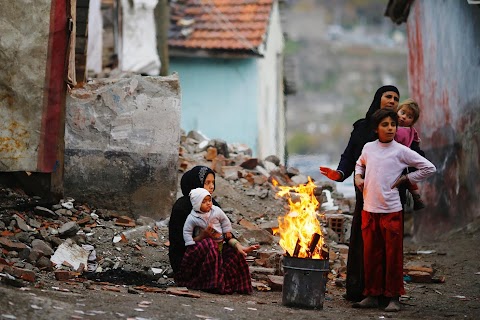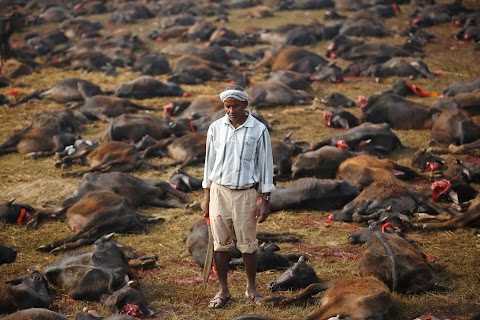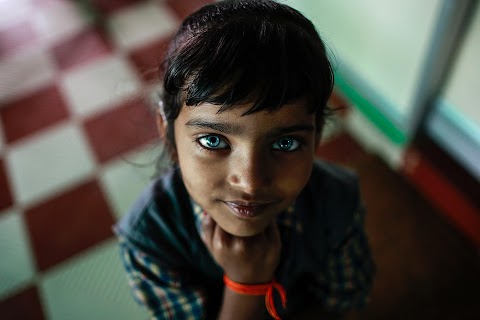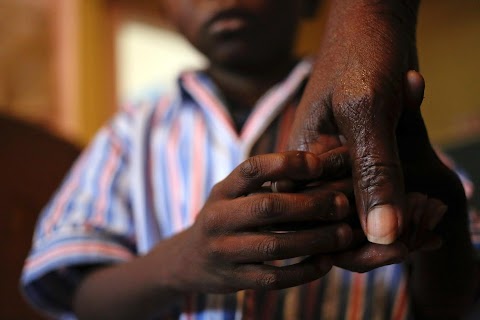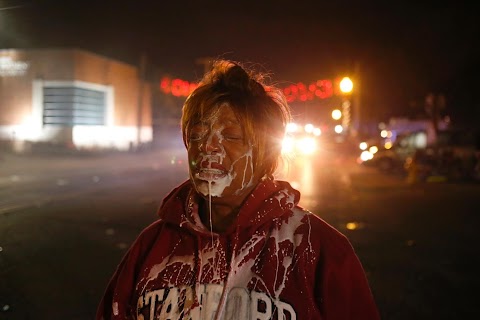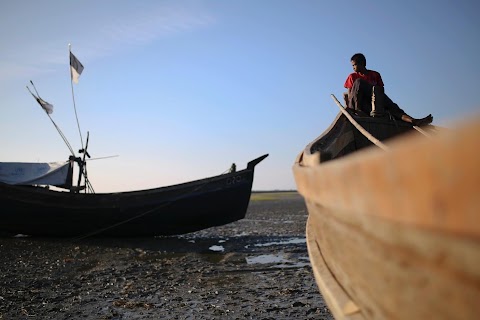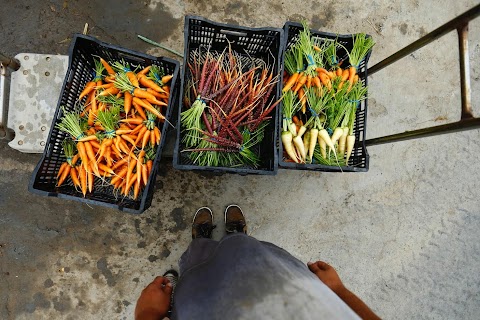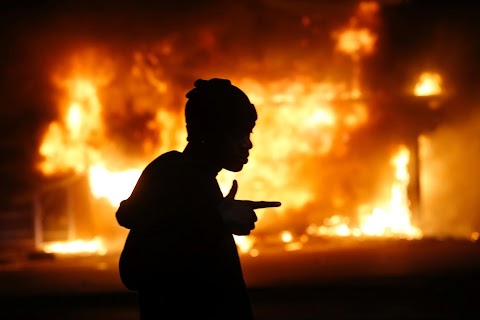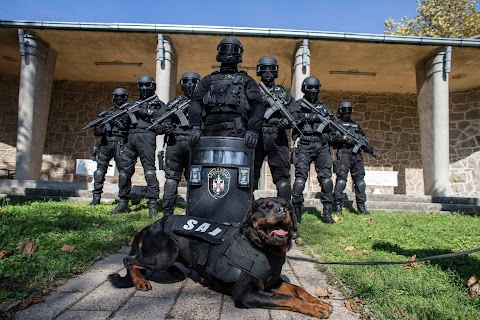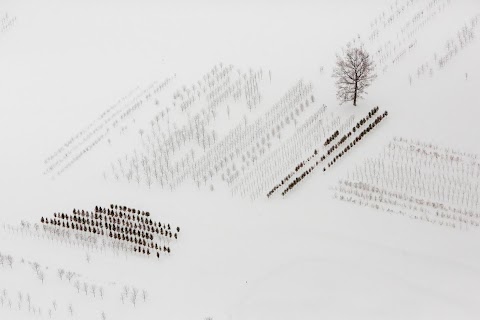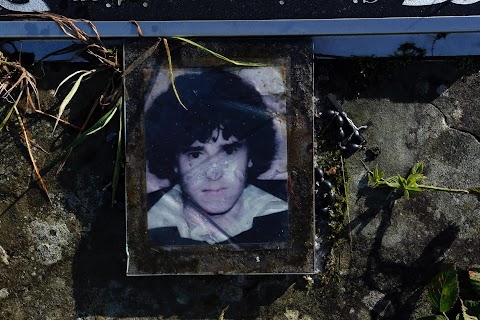
The Disappeared
 Cathal McNaughton
Cathal McNaughton
Brian McKinney, pictured above, went missing in Northern Ireland in May 1978 aged 22, but his body was not discovered until two decades later.
He is among a dozen other people "disappeared" by the Irish Republican Army in the 1970s and 80s.
Six bodies remain missing and, like most of the 3,600 victims of the "Troubles", none of the crimes have been solved.

Details of the murders emerged after the 1998 peace deal ended three decades of tit-for-tat killings by mainly Catholic Irish nationalists, who opposed British rule in Northern Ireland, and mainly Protestant pro-British loyalists.
The IRA admitted killing 13 of the 16 classified as "disappeared" in the 1970s and 80s, mostly Catholics accused of collaborating with British forces, while the Irish National Liberation Army admitted one. No one has taken responsibility for the other two, or two more who went missing after 1998.
Brian’s mother Margaret is pictured above holding a running shoe her son was wearing when his body was found.

The problems faced by the families of the Disappeared echo those of a land where the murders of 3,000 people, one in 600 of the population, remain unsolved. From villages to Belfast housing estates, killers pass victims' families on the street.
"We know who was involved. They are local people," said Sheila Simons, whose brother Eugene was taken on January 1, 1981.
Her father Walter, pictured above holding a photograph of his son, said he was threatened when he tried to find Eugene, whose body was found, by accident, in a bog in 1984.

Another man, Seamus Ruddy, disappeared in Paris in May 1985, aged 33. A pair of glasses found in his Parisian apartment is pictured above in his sister Anne Morgan's house. His body has never been recovered.
The huge backlog of cases, cuts to police resources and the gradual disappearance of forensic evidence, including the destruction of weapons during the peace process, has convinced many families that the chances of the crimes being solved are slim.

Charlie Armstrong disappeared after he left to go to Mass in August 1981, aged 55. His body was found in a bog three miles from the family home in Crossmaglen, County Armagh. The map pictured above shows the dig site for his body.
For most of the families, the priority is securing the return of the bodies, not pursuing justice.

"The past has been left behind and the politicians are quite happy to let it go ... it's hard to take," said Oliver McVeigh, pictured above holding a photograph of his brother Columba, at their mother Vera's graveside.
McVeigh is still searching for the remains of his brother, kidnapped by the IRA in 1975 aged 17, His mother's wish was that her rosary beads be placed in Columba's coffin when he is found.
Slideshow

Anna McShane stands at the location where her father Charlie Armstrong's remains were discovered in County Monaghan. Armstrong disappeared after he left to go to Mass on 15th August 1981 aged 55 . His body was found in a bog three miles from the family home.

A letter from the person alleged to have buried Charlie Armstrong, which was sent to his family, is seen in County Armagh.

This religious medal was sewn into the waistband of Charlie Armstrong's trousers when his remains were discovered.

Walter Simons holds a picture of his son Eugene who disappeared on 1st January 1981 aged 26. His body was recovered three years later on May 24, 1984 in a bog.

This cross was discovered with Eugene Simon's body.

The coroners report on Eugene Simons describes his injuries.

Anne Morgan’s brother, Seamus Ruddy, disappeared in Paris May 9, 1985, aged 33. His body has never been recovered.

This map was drawn by people connected to the murder of Seamus Ruddy.

Oliver McVeigh holds a picture of his brother Columba, at their mother Vera's graveside, in Donaghmore. Columba disappeared on November 1, 1975 aged 17. His body has never been recovered.

Columba McVeigh's last letter home to his mother is displayed in his brother’s house. His mother's wish was that her rosary beads should be placed in Columba's coffin when he is found.

Patricia Gearon (left), 64, and her sister Helen McKinley, 65, walk to the site where their brother Peter Wilson's remains were discovered at Waterfoot beach. Wilson was last seen in Falls Park in August 1973, aged 21.

A stone marks the spot where Peter Wilson's remains were discovered. His body was found in November 2010.

McKinney’s shoes are pictured above in his mother’s apartment in West Belfast.
"It struck me how the suffering and heartache endured, in some cases, over 30 years later."
I've been aware of the story of the "Disappeared" most of my life. In fact, I grew up with it.
While I've covered some pretty horrific stories in Northern Ireland over the years - I've been to murder scenes and I've heard gruesome things - shooting this story affected me more than many of the things I've seen.
The families of the 18 people who went missing during the Troubles in the 1970s and 80s have been interviewed or photographed many times before, and while they're very helpful there are certain pictures they're willing to have taken.
I knew that if I wanted to go into more detail, I had to get to know them a little better, so I arranged meetings with them through one of the trauma centers. I wanted to spend some time breaking down barriers and explain what I planned to do.
I was surprised at the access they gave me - I was told I was among the first people to hear some of these stories and to see some of the belongings. It was an amazing privilege.
Many hours were spent thinking about how I wanted to illustrate this story - there had to be some sort of theme or symmetry. The pictures can’t be disjointed even though they should be able to stand on their own.
People may ask: "Why has he photographed a pair of glasses or running shoes?" Well, it forces the viewer to read the caption and once they do that, the picture takes on a stronger meaning.
Photographing Margaret McKinney stroke the running shoes her 22-year-old son Brian was wearing when he disappeared on May 25, 1978, the soil still ingrained in their soles, is something that will remain with me.
As she broke down at his graveside, it struck me how the suffering and heartache endured, in some cases, over 30 years later.
With that in mind, I was careful to respect the people I was photographing, to not abuse their trust and to do the story justice. There is such a weight of responsibility that comes with being a photojournalist.

